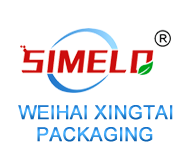[Abstract] this paper introduces the importance, classification, basis and method of packaging aging test, the focus of practical operation and the result evaluation.
Packaging aging test
1. Importance of aging test
Aging test is also an important item to be considered in MDSP design. For products with high safety requirements such as medical devices, aging test is related to the guarantee of product validity, so it can not be ignored. The conclusion report of aging test can also be submitted to relevant agencies for review, such as CE certification of EU or 510k application of FDA. The printed material is a supporting document for the product validity statement.
In several versions of ANSI / AAMI / ISO 11607 standard, there has been a very clear statement: "the manufacturer shall be responsible for proving that the final packaging of the product is in the process of long-term circulation and storage, as long as the packaging is undamaged or unopened, and the paper is transported under the storage conditions specified by the manufacturer, during the validity period of the product label, the packaging shall Maintain integrity. This is the most direct authoritative standard for product aging test. But this standard is a general standard after all. It only mentions that aging test should be carried out to ensure the validity of product validity, but does not mention the details of how to carry out aging test.
In fact, it is not difficult to find out that this test is actually a systematic, complex and long-term sample environmental adjustment process when analyzing the over packaging of aging test from a very scientific point of view, which is essentially the same as those specified in ASTM d4332, i.e. let the sample undergo a certain period of adjustment in a specific environment, and then conduct these adjustment processes Necessary physical, chemical, biological and mechanical tests shall be carried out for the samples with specific environmental regulation to prove whether there are various performance differences before and after environmental regulation. If we use a simple sentence to summarize the aging test, the over packaging should be: the aging test is a long-term, systematic environmental regulation process that does not involve product performance test.
2. Classification of aging test
According to different properties, aging test can be divided into real time aging test and accelerated aging test. As the name implies, the former is placed in the normal temperature environment, or in the expected circulation and storage environment of the product, until the expiration of the design validity period for packaging and decoration, and then take out the packaged products for relevant performance test, and compare the performance test results with the sample performance test results before the aging test, so as to judge the effectiveness of the product Whether the design is reasonable. The accelerated aging test is to design a specific aging test environment, so as to greatly shorten the usually very long aging test duration. There is a correlation between this specific environment and the proportion of shortened time.
It can be seen from this that the real aging test of wine packaging is very simple, but it takes a very long time, which may not be suitable for the requirements of the fierce market competition on timeliness, so accelerated aging test is often used. But the real aging test is essential, because its result is the most accurate and authoritative big family Guanhua, and the result of accelerated aging test is just a transition, when the real aging test results come out, the final reference should be made to the real aging test results. The emphasis of this paper is the relatively complex accelerated aging test.
3. Basis and method of accelerated aging test
Before talking about MDSP accelerated aging test, the first thing I want to declare is: This is a fuzzy Science Digital Printing post press processing, because the chemical reaction involved in the test itself is too complex, and its theoretical basis has not been confirmed by scientific authority so far.
The relevant standard for MDSP accelerated aging test is ASTM f1980, which has not been launched for a long time. It is a standard specially formulated for MDSP accelerated aging test by the working group f02.60 under ASTM (F02 is the working group related to flexible packaging standard in ASTM, and 60 is the working group related to MDSP in F02). At present, there are two versions of this standard, which are the most active The first May 1999 edition and the updated January 2002 edition three years later. ASTM f1980 is also the first officially published standard to guide how to conduct MDSP accelerated aging test, which should be a great progress for the development of packaging accelerated aging test. Of course, this is not to say that there was no guidance standard or scheme for accelerated aging test before this standard was issued, but some methods are not systematic or general enough.
The main contents of ASTM f1980 include how to prepare accelerated aging test program for packaging, and some related information expression and declaration for packaging trade, but it does not involve the real aging test program and some specific test methods for judging the packaging performance of products.
ASTM f1980 explicitly refers to the theoretical basis of accelerated aging test, which is described as follows in Clause 6.3 of Part VI: the theory of accelerated aging test is based on the assumption that the chemical reaction of material modification follows Arrhenius reaction rate law. According to this law, when the temperature is increased or decreased by 10 ℃ in a single process, the acceleration ratio factor Q10 of chemical reaction will increase or decrease by about twice. Of course, there are some informative contents behind this theory that need to be understood. For example, packaging materials are always affected by external environmental factors; for example, to accurately determine arrheni

